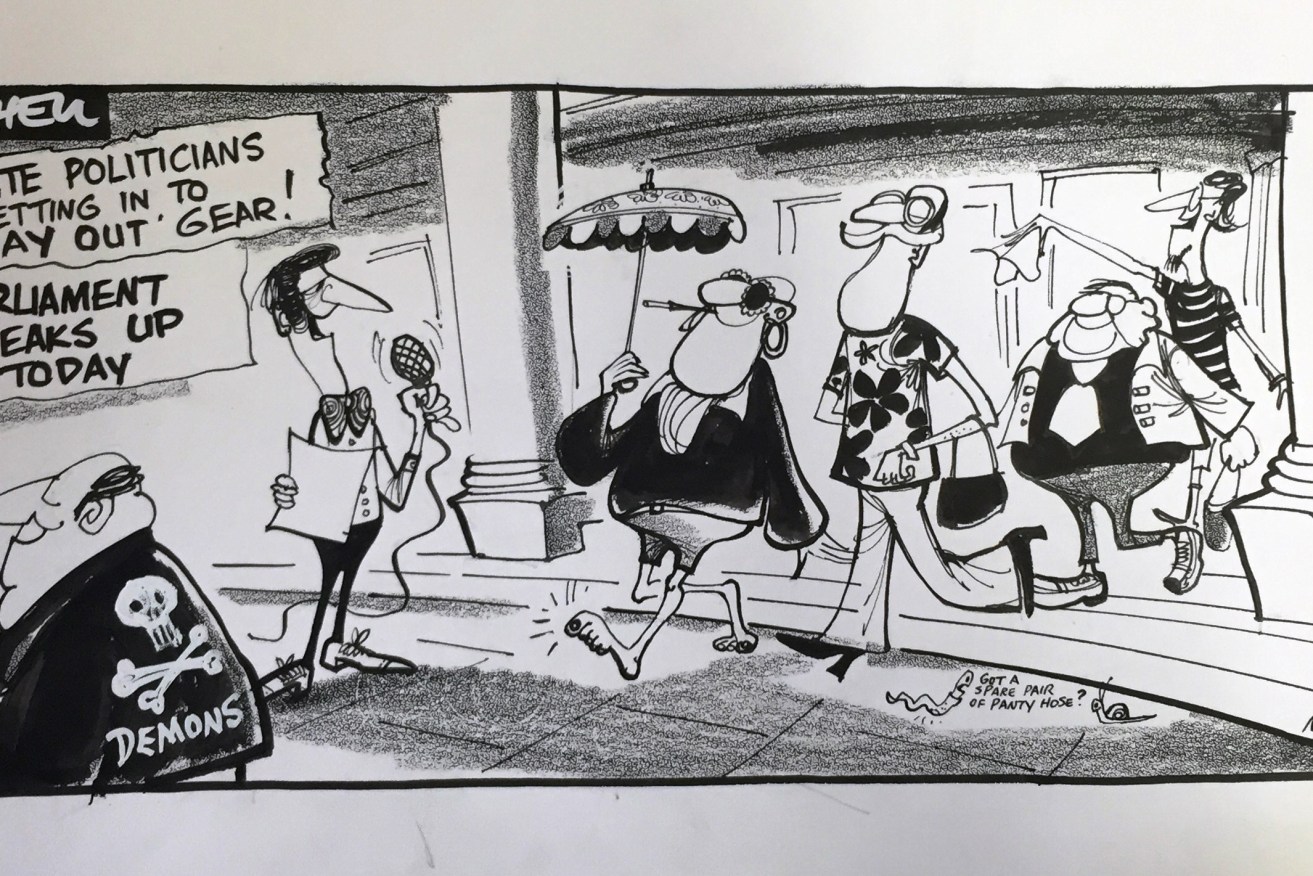Time and place: Norm Mitchell and cartoon politics in the ’70s
For 30 years, cartoonist Norm Mitchell charted a tumultuous time of social change in Adelaide. In the latest installment in our series on significant South Australian places, people and things, we look at Mitchell’s career at The News, and one particular cartoon that summed up a political era.

Norm Mitchell's cartoon. Image courtesy the History Trust of South Australia.
The political cartoon has been an important mode of communication in Australian newspapers for centuries. Glazed in satire and saturated by humour, political cartoons reveal social feelings towards people and issues, and are activist in many ways.
Norman Mitchell, commonly known as Norm, was born in NSW and from a young age became interested in newspapers. He joined Smith’s Weekly as a copy boy in 1935 with high hopes of one day moving into the art department. Some months later he became a cadet artist for the same paper and worked under cartoonists Stan Cross and Jim Russell. He eventually left NSW in 1950 to take up a post with Keith Murdoch’s The News in Adelaide. It was here that Norm came into his own. He remained working for The News for the next 30 years.
Pat Oliphant, well-known Australian editorial cartoonist, described Mitchell’s work as having “a loose line… and his cartoons looked as though they’d just jumped out of the ink bottle”.
One of Mitchell’s cartoons, in particular, epitomises the satirical nature of political cartooning of the 1970s.
A lot of us will know, and remember, one of former Premier Don Dunstan’s most daring fashion choices, and the news reports that followed.
“Wearing deep pink tight flannel shorts, a white T-shirt, long socks, and brown shoes, South Australia’s swinging Premier stood out like a beacon in the grey conservative décor of Parliament House,” reported The News.
A spectator remarked this was Dunstan’s most “far out” gear ever, which one would assume inspired the words in the speech bubble depicted in Norm Mitchell’s cartoon. It was Dunstan after all who abolished the somewhat antiquated rules about dress code in the House of Assembly.
However, it was not only Dunstan who was dressed in far out gear, but also Robin Millhouse, the then deputy leader of the Opposition. An image that featured in The Advertiser depicted members of the Liberal Party modelling ‘Australian fibre, manufacturing and design’ as a fundraiser for the upcoming election campaign.
Mitchell captures the feelings about the strict dress code enforced at Parliament House with a humourous tongue and cheek depiction of Parliament breaking up. You see MPs in flared pants and floral shirts with handbags and parasols, a fashion show for South Australian Parliament.
The 1970s were a time of social and political change in South Australia and Mitchell’s cartoons are important in the re-telling and remembering of those issues.
Mitchell achieved national recognition in 1975 when he was awarded the 42nd Walkley Award for the best Australian cartoon for a comment on opinion poll-driven politics. He was prolific, producing one cartoon a day for 48 weeks of the year during his 30 years with the paper.
Craig Middleton is Curator of The Centre of Democracy.
Time and place is a series about historic places, people and objects in South Australia, brought to you by a partnership of InDaily and the History Trust of South Australia.
Go here for more “Time and place” articles.
For more stories like this one, you can also visit the SA History Hub.




